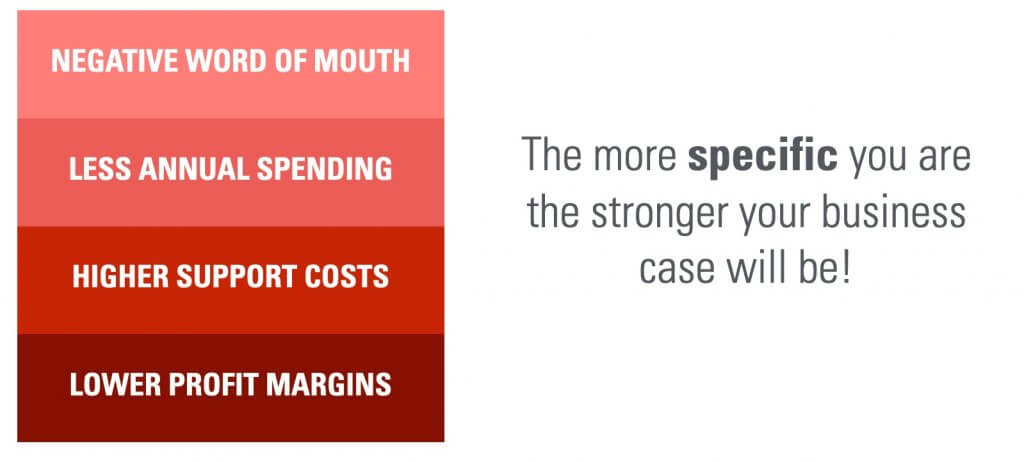The simple math of service design and how a single customer be worth 1 billion (!) dollars
Published in: Selling Service Design Playbook
A helpful overview to quickly give an estimate of the potential costs associated with failing to deliver a good service experience. And the potential upside of fixing a bad experience.

When to use it?
When you’re struggling to justify the investment in service design this simple overview can be an absolute life saver.
It allows you to make a back of the napkin estimate of how much money a company is currently losing related to unsatisfied customers.
Basically you can create awareness with your potential client around the costs of not doing service design. Or rather doing bad service design.
By doing this you can quickly get a sense whether there’s a problem that’s worth solving.
How to use it?
In a conversation pick one cost driver from the overview and try to calculate the related costs. Even if this is just a rough estimate.
Here’s a simple example. How many customers do you have? How many calls do you get in the support center? What percentage is that? What is the cost of a support call?
When you do this you will end up with a number that tells how much confused, frustrated or angry customers currently are costing the company. This is a number you can now work with to make a business case for service design.
Some costs are definitely easier to estimate than others. For instance, support costs are easier to find than the price of negative word of mouth. But don’t let that discourage you. You could for instance look at how much a company is spending on marketing and advertising. When you’re able to deliver a great service experience more customers will promote your business (positive word of mouth) and your overall marketing costs will go down.
Why it works?
There are a few reasons why using this overview as a storytelling tool is so powerful.
- No one wants to invest a lot of money to attract new customers just to see them leave on the other side. But it happens in every organisation which makes for an easy conversation starter.
- These costs are very real and happening right now. This makes the potential (short term!) uptake very tangible.
- You create an explicit connection between the bottom line (profit) of an organisation and customer experience.
Overall it comes down to the fact that it’s easier to show the benefit of fixing a leaking bucket rather than building excitement about filling the bucket.
Example
I was once in a board meeting where the CEO made an educated guess that they were losing around 10% of the yearly revenue due to customers who were unsatisfied about their service. This gave more than enough justification for our project to get the internal support it needed. Suddenly everyone was fully aware of what was at stake.
Another inspiring (and pretty extreme) example of how much unsatisfied customers can cost a company has been provided by United Airlines. After a video appeared on social media where a passenger was dragged off an overbooked flight, the company lost almost $1.000.000.000 (yes, billion!) in value on the stock market.
Take action
- Ask your potential client if they can fill out the overview with their team and get back to you with the numbers.
- Ask the client if they see other cost drivers that are currently not in the overview but do impact their business.
Additional resources
- Complementary to the cost drivers are growth drivers (article coming soon!)
